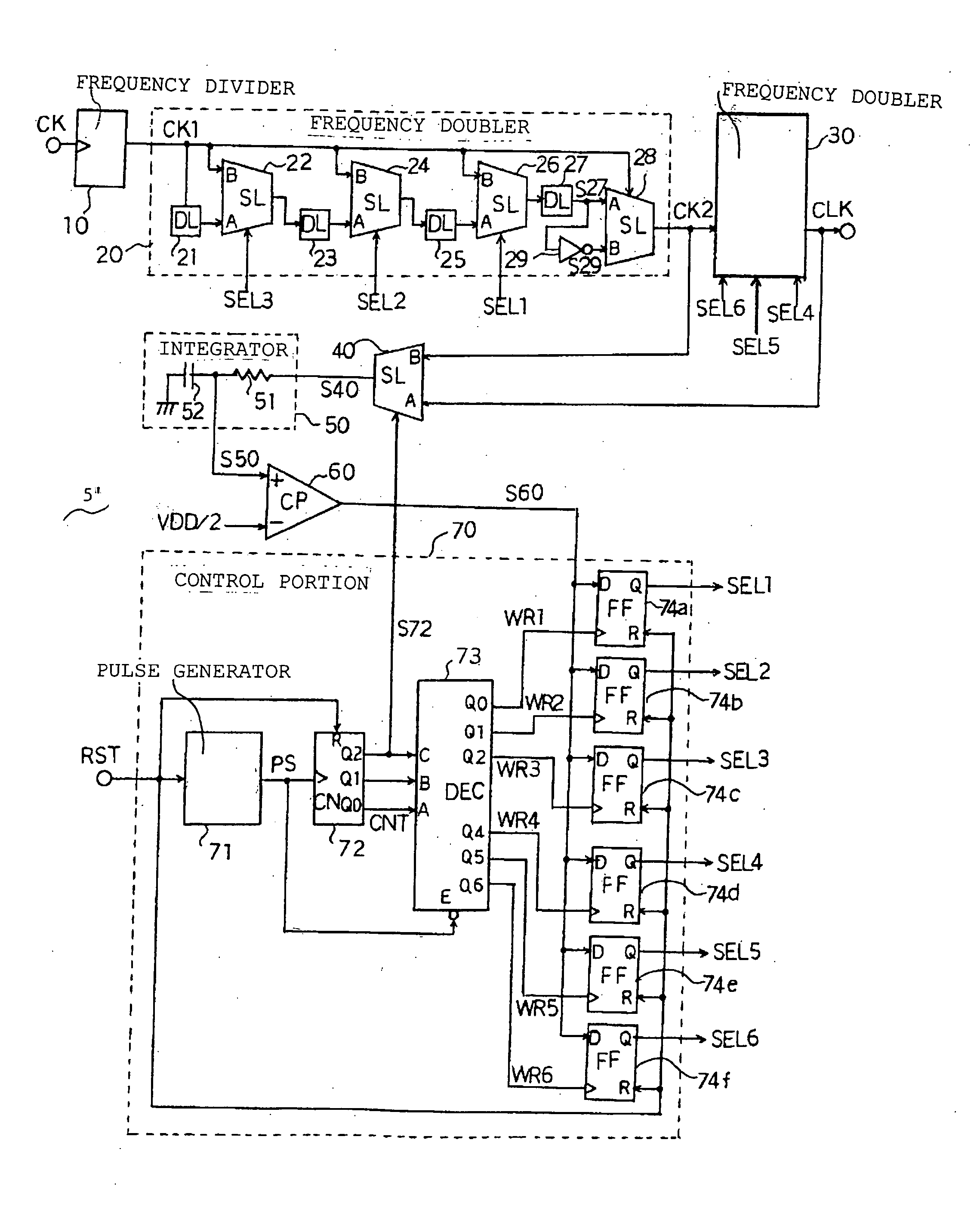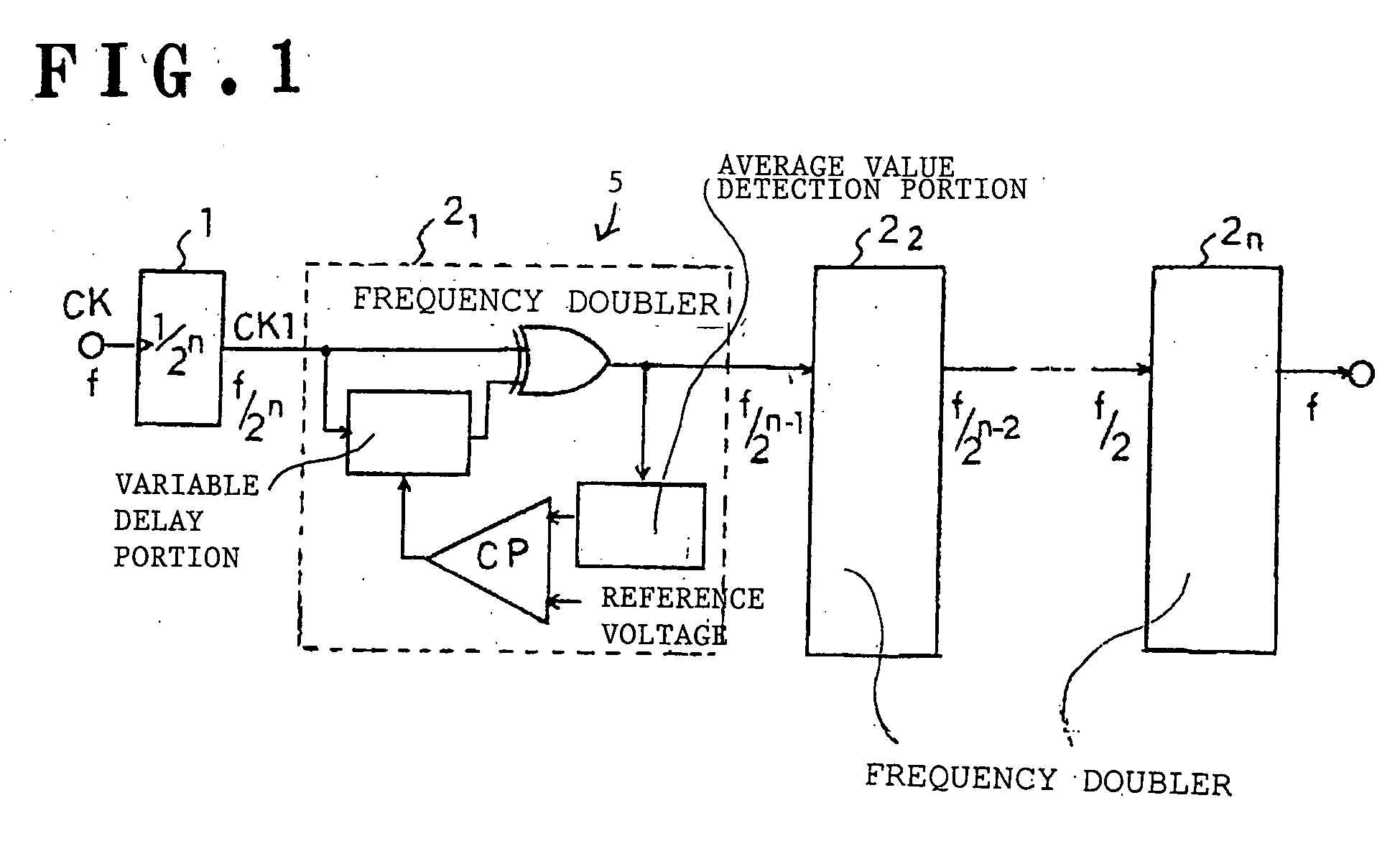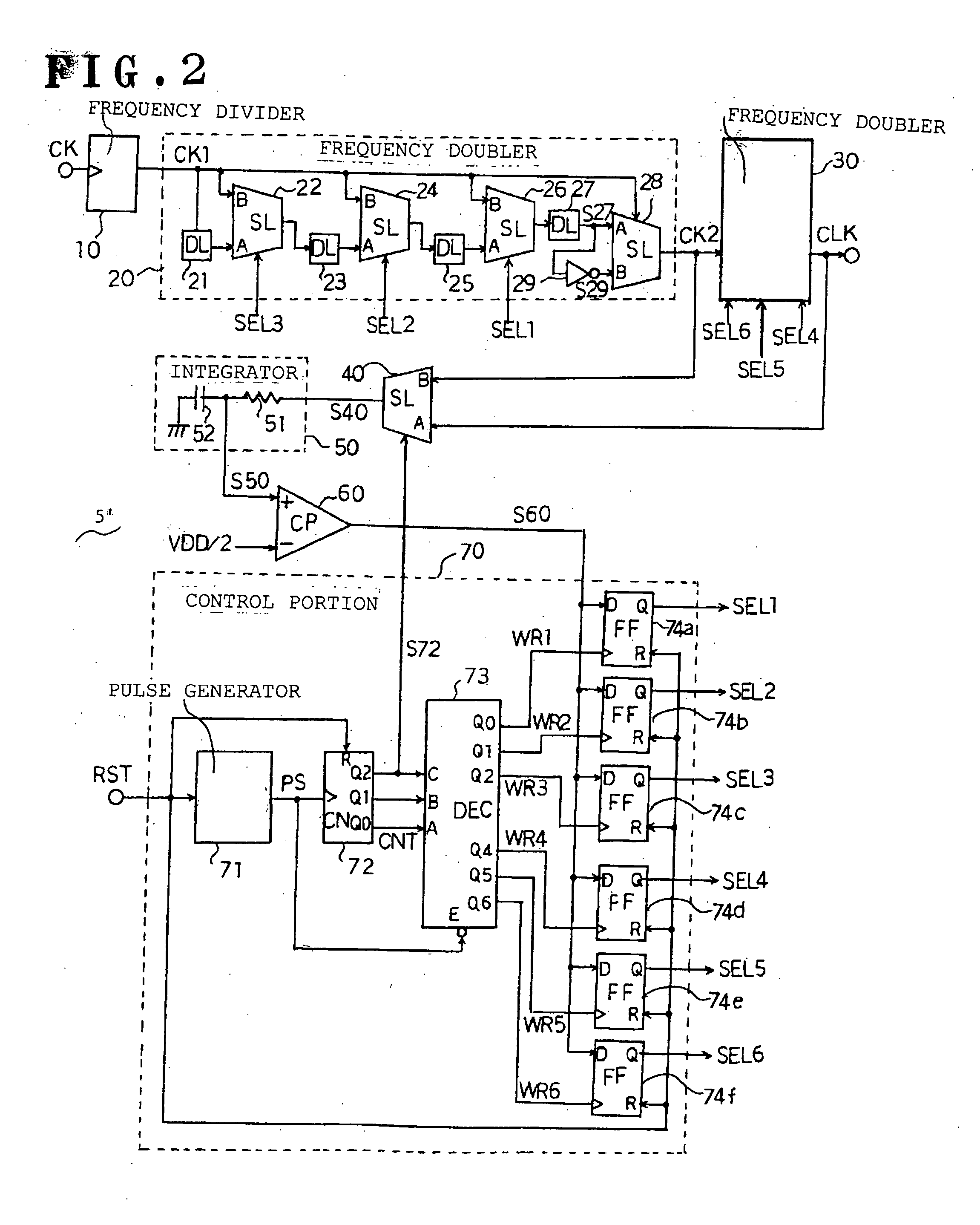Duty adjustment circuit
a duty adjustment circuit and duty adjustment technology, applied in pulse generators, pulse manipulation, pulse techniques, etc., can solve problems such as the possibility of erroneous operation or inoperable state, and the generation of clock signals with extremely short pulse widths, so as to suppress the adverse effects of high-level instantaneous noise
- Summary
- Abstract
- Description
- Claims
- Application Information
AI Technical Summary
Benefits of technology
Problems solved by technology
Method used
Image
Examples
embodiment 1
[0018]FIG. 2 is a circuit diagram of a duty adjustment circuit 5′, showing an embodiment of this invention.
[0019] This duty adjustment circuit 5′ has a frequency divider 10 which divides the frequency of the clock signal CK for adjustment by 4. This frequency divider 10 includes for example a two-bit binary counter, and outputs a clock signal CK1 with a duty ratio of 50%. The clock signal CK1 generated from the frequency divider 10 is provided to the frequency doubler 20.
[0020] The frequency doubler 20 is configured to generate a clock signal CK2 with double the frequency of the clock signal CK1, and also to enable adjustment of the duty ratio of the clock signal CK2 according to selection signals SEL1 to SEL3.
[0021] This frequency doubler 20 has a delay unit (DL) 21 to which the clock signal CK1 is introduced, and a selector (SL) 22. The output signal of the delay unit 21 is supplied to an input terminal A of the selector 22, and the clock signal CK1 is supplied to an input term...
PUM
 Login to View More
Login to View More Abstract
Description
Claims
Application Information
 Login to View More
Login to View More - R&D
- Intellectual Property
- Life Sciences
- Materials
- Tech Scout
- Unparalleled Data Quality
- Higher Quality Content
- 60% Fewer Hallucinations
Browse by: Latest US Patents, China's latest patents, Technical Efficacy Thesaurus, Application Domain, Technology Topic, Popular Technical Reports.
© 2025 PatSnap. All rights reserved.Legal|Privacy policy|Modern Slavery Act Transparency Statement|Sitemap|About US| Contact US: help@patsnap.com



